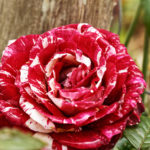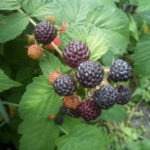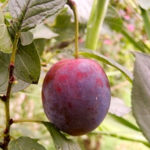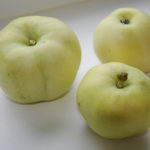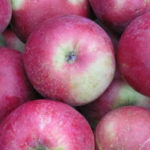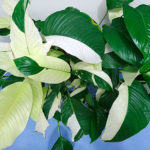Plum variety President
The President is an old English variety of Prunus domestica of late ripening. It has been known since the 19th century (Hertfordshire, Great Britain, 1850 - 1899). It became widespread at the beginning of the 20th century (since 1901).
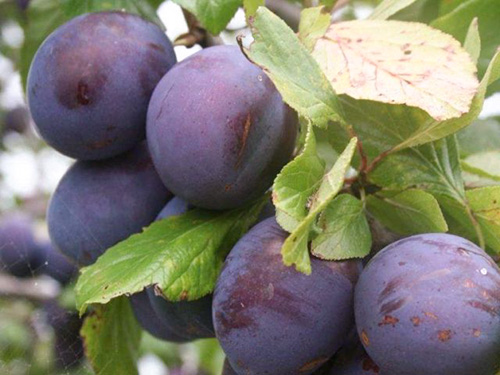
The trees are medium-sized (up to 3 m high), fast-growing, with an oval-rounded crown of medium density. In the early years, young growths generally grow vertically upward, assuming a more or less horizontal position after entering fruiting. The bark of the trunk and main branches with a smooth surface, painted in a gray-green color. The shoots are thick, straight, not pubescent, colored red-brown. Lentils are medium in size, white in color, often found on the shoot. The leaves are large, dark green, non-pubescent, short-pointed, broadly rounded, with a sharply pointed apex and a rounded base, along the edge there is a double-crested serration. The surface of the leaf blade is wrinkled, matte, the shape is "boat", with a downward concavity. Stipules of medium size, early falling. Petioles are of medium length, thick, pigmented.
Inflorescences are two-, three-flowered. The flowers are white, large, pink-shaped. Fruit ovaries are formed mainly on bouquet branches.
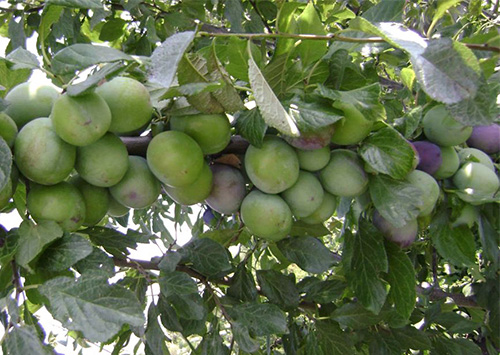
The fruits of the President plum are large in size (average weight 45 - 50 g, maximum 60 - 70 g), one-dimensional, rounded, with a rounded apex and a depression at the base, a wide fossa, medium in depth. The peel is of medium thickness, naked, with an inconspicuous small abdominal suture, with a waxy coating covered in a medium degree, it is difficult to separate from the pulp. The main color of the fruit is green, the integumentary color is solid burgundy, with a black and blue tone. Subcutaneous dots are white, few in number, well visible. The stalks are of medium length and thickness, they are not firmly attached to the stone, they are easily separated from the branches. The stones are medium in size, ovoid, pointed above and below, the surface is pitted; the separability from the pulp is good.
The pulp is colored yellow-green or yellow, the color of the cavity is one-color with the pulp, the taste is tender, juicy, sour-sweet. The juice is colorless. In terms of chemical composition, the fruits contain: dry matter (15.5%), the amount of sugars (8.49%), acids (2.46%), ascorbic acid (4.12 mg / 100 g). The external attractiveness of the fruit is estimated by the tasters at 4 points. Evaluation of fresh fruit taste according to a 5-point tasting scale - 4 points. In terms of use, the variety is universal, well suited for culinary purposes (preparation of compotes, preserves, wines, marmalades, marshmallows, marmalade, etc.). Fruit transfer well.
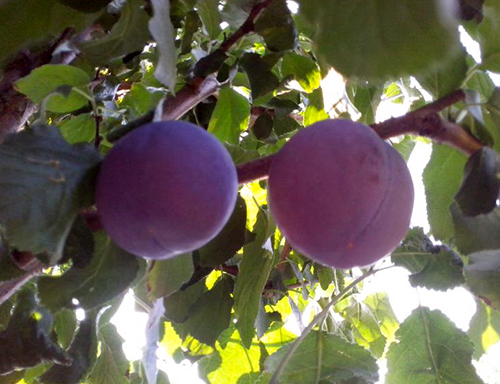
The trees bloom from 10 to 19 May. The ripening period of the fruits is late - the 2nd decade of September with a warm summer, otherwise the 3rd decade of September or October (depending on the region of growth). The level of early maturity of the variety is average: trees enter the fruiting season from 5 to 6 years. Fruiting is annual. Ripe fruits are firmly held on the branches, partial shedding is observed only when overripe. The keeping ability is good. Slightly unripe fruits, harvested 5-6 days before ripeness, are stored for 2 weeks. However, you should not rush to take off prematurely, since the pulp often remains too tough, coarse, sour, with a mediocre taste. The same is observed under unfavorable growing conditions (dry summers, cold September). In general, in a refrigerator, ripe fruits are stored for a long time without losing their presentation and taste.
The President plum is high-yielding: up to 15-20 kg of harvest is harvested from a 6 - 8-year-old tree, at the age of 9 - 12 years the yield reaches 25 - 40 kg per tree, the maximum yields are given by the healthiest trees - up to 70 kg of fruits.
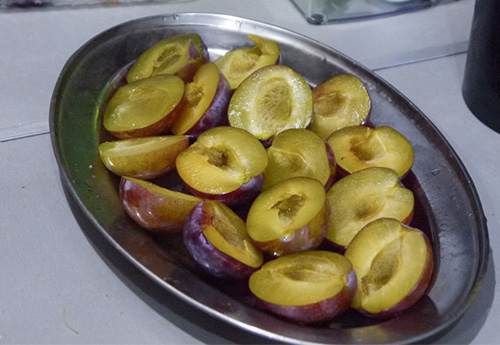
The variety is drought-resistant and winter-hardy. In the harsh winter of 1968-1969. trees froze up to only 1.2 points, in the winter of 1978 - 1979. freezing reached 3.3 points. The degree of freezing of young trees did not exceed 2 points.
Overall disease resistance is rated as medium.The plum is resistant to scab and major fungal diseases. The defeat of moniliosis is 0.1 - 0.2%, the plum moth - 0.3 - 0.5%. Gum removal is rare. In some years, trees are moderately affected by plum-pollinated aphids.
The variety is highly self-fertile. However, joint planting with certain varieties helps to increase its yield. Among the best pollinators: Mirnaya, Skorospelka red, Stanley, Renklod Altana, Ternosliv Kuibyshevskaya. Good pollinators: Amers, Vision, Herman, Joyo, Kabardian early, Katinka, Renklod Temple, Rush Geshtetter, Rival.
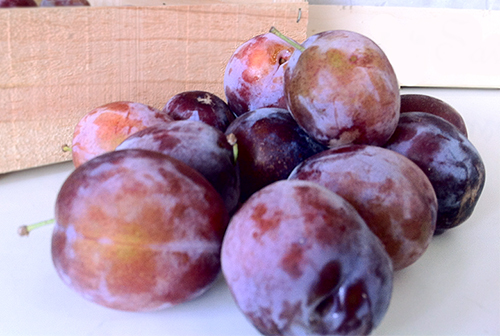
The main advantages of the President plum include: large fruits with excellent commercial and consumer characteristics, annual fruiting, large yields, a high level of winter hardiness of wood and flower buds.
Among the disadvantages of the variety: average resistance to diseases (minimal fertilization is often not enough), rather fragile wood (branches can break off under the weight of the fruits, therefore additional support is required).
It is worth noting that in the conditions of the Moscow region, the fruits in some years do not have time to fully ripen, while losing dessert taste and acquiring a more mediocre taste (suitable only for processing).
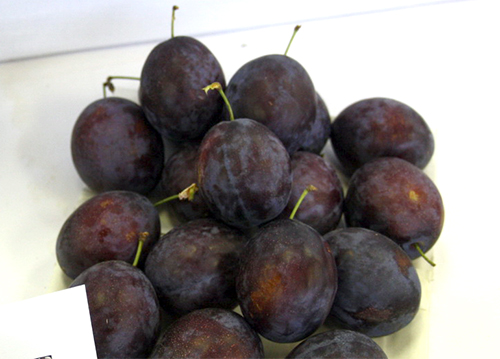
Also, in the early years, you should not neglect the formative pruning, because without proper care, a thickened crown with a large number of branches is formed.
